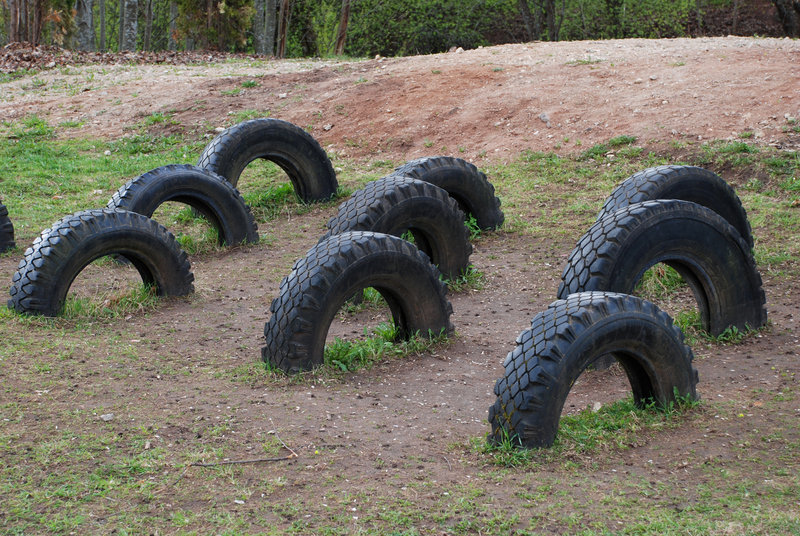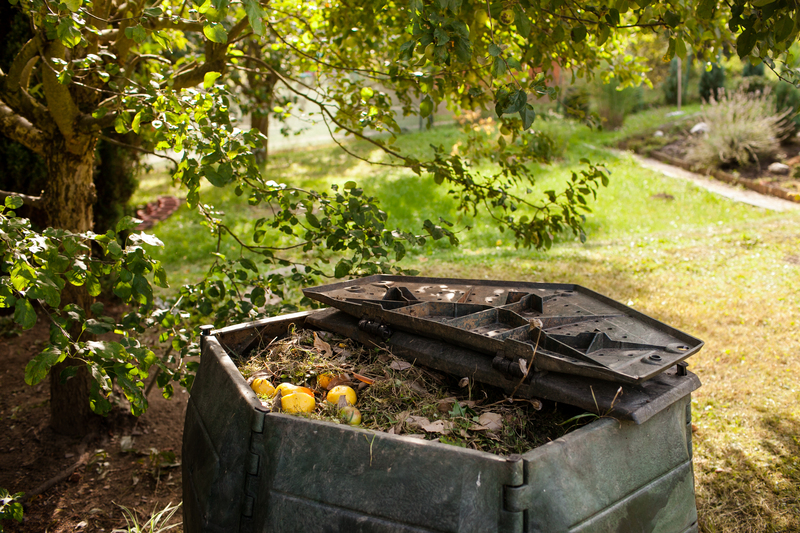Resourceful Tips for Cutting Household Waste
Cutting household waste has become a vital step in fostering a sustainable planet and saving money at home. Our daily habits contribute significantly to the waste stream, but with practical strategies, you can dramatically reduce the trash your family generates, while enjoying a more organized and efficient home.
Why Reducing Household Waste Matters
Every year, households contribute millions of tons of garbage to landfills, much of which could be reduced, reused, or recycled. Waste reduction not only conserves valuable resources but also lowers greenhouse gas emissions and saves you money. Whether your motivation is environmental responsibility, cutting your trash bill, or creating a tidier space, these resourceful tips for minimizing household waste will help you succeed.

Top Resourceful Ways to Cut Household Waste
Let's explore a range of actionable, sustainable approaches to cutting down household waste, suitable for all ages and lifestyles.
1. Analyze Your Trash & Set Clear Goals
- Conduct a waste audit: Before you start, evaluate what you're throwing away. Take note of frequently discarded items such as food scraps, packaging, single-use plastics, old clothing, and paper products.
- Identify problem areas: Are you wasting food? Accumulating plastic bags? Tossing out recyclables?
- Set realistic waste reduction targets based on your findings. For instance, aim to reduce kitchen waste by 25% over the next three months.
2. Reconsider Your Shopping Habits
Much of our household waste comes from the items we purchase. Consider smarter strategies before and during your shopping trips.
- Buy in bulk: Bulk items use less packaging and are often cheaper. Bring your own containers to stores that support bulk bin shopping.
- Choose products with minimal or recyclable packaging: Opt for glass, cardboard, or aluminum packaging over plastic. Reusable packaging is best!
- Plan meals and write a grocery list: Shop with a plan to avoid unnecessary purchases and food spoilage.
- Support local markets: Local produce is often sold with less packaging and has a lower carbon footprint.
3. Embrace Reusables
- Invest in reusable grocery bags, produce bags, and containers. Say goodbye to single-use plastic bags and cling wrap.
- Switch to reusable water bottles and coffee cups. Stainless steel or glass options are durable and eco-friendly.
- Use cloth napkins, rags, and towels instead of paper disposables. This significantly reduces your paper waste.
- Try beeswax wraps or silicone lids as sustainable alternatives to plastic wrap.
4. Prioritize Composting
Composting is one of the most effective strategies for cutting organic waste from your home.
- Set up a kitchen compost bin for fruit and vegetable scraps, coffee grounds, eggshells, and more.
- If you have a yard, start a backyard compost pile. For apartments, consider vermicomposting (worm bins) or local community compost programs.
- Many municipalities offer composting services - see what's available in your area.
- DIY composting reduces landfill waste and produces nutrient-rich material for gardens and plants.
5. Get Creative with Recycling
Household recycling goes beyond bottles and cans. Explore innovative recycling and upcycling opportunities for a waste-free home.
- Familiarize yourself with what can be recycled locally--guidelines can vary, and mixing non-recyclables in bins can contaminate loads.
- Recycle e-waste, batteries, light bulbs, and textiles at designated drop-off points.
- Upcycle old jars as storage, transform t-shirts into cleaning rags, or turn cereal boxes into organizers.
- Join online communities or attend workshops to learn new upcycling skills.
6. Reduce Food Waste at Home
Food waste is a significant part of household garbage, but with a few handy tips you can be more resourceful in the kitchen:
- Store food properly: Use airtight containers and label leftovers to prevent spoilage.
- Practice first in, first out (FIFO) by using older products before new ones.
- Repurpose leftovers: Transform scraps into soups, casseroles, or smoothies.
- Freeze excess produce, bread, or prepared meals before they spoil.
- Create a weekly "eat the leftovers" night to clean out the fridge.
7. Cut Down on Paper Waste
- Go digital: Opt for paperless billing, statements, and subscriptions.
- Use both sides of the paper for printing and note-taking.
- Repurpose scrap paper for lists, notes, or crafts before recycling.
- Cancel junk mail or opt out of unsolicited paper advertising.
8. Repair, Don't Replace
Avoid impulsively replacing broken or old items. Instead, try these resourceful strategies:
- Learn basic repairs for clothing, small appliances, and electronics.
- Seek out local repair cafes or workshops for helpful guidance.
- Get creative with DIY fixes using online tutorials.
9. Thoughtful Decluttering and Donations
- When decluttering, separate items into categories: donate, sell, recycle, or upcycle.
- Donate usable household goods, clothes, and toys to charities or online giving groups.
- Selling unwanted items online can help them find new life and reduce landfill waste.
- Always check if something can be recycled or repurposed before tossing it.
Advanced Waste Reduction Techniques for Eco-Conscious Households
Embrace the Zero-Waste Lifestyle
The zero-waste movement aims to send nothing to landfill. While true zero-waste living is challenging, adopting some principles can drastically reduce your household waste output:
- Buy products in bulk or refillable containers whenever possible.
- Choose to bring your own reusable cutlery, containers, and cups when eating on the go.
- Make, rather than buy, household cleaners and toiletries when feasible, using natural ingredients and reusable containers.
- Grow herbs or vegetables at home to cut down on packaging and food waste.
Engage Your Household
Make waste reduction a family affair!
- Hold a quick family meeting to discuss your new goals.
- Assign roles--kids can be compost monitors, paper recyclers, or leftover meal planners.
- Lead by example to show enthusiasm for resourceful waste reduction.
Stay Motivated with Progress Tracking
Keep waste reduction engaging and rewarding by:
- Measuring your trash output weekly or monthly and celebrating cuts in landfill waste.
- Sharing tips and progress on social media to inspire others.
- Rewarding your household for eco-friendly achievements--perhaps with a fun, waste-free outing!
Common Challenges and Solutions When Cutting Household Waste
Even well-intentioned households face obstacles when trying to minimize waste. Below are solutions to frequent challenges:
"Convenience Wins"
- _Solution_: Prepare ahead by keeping reusable bags, bottles, and containers accessible in your car, bag, or entryway.
- Batch meal prep on weekends to reduce reliance on packaged, convenience foods.
Confusing Recycling Rules
- _Solution_: Visit your local council or collector's website for clear guidelines; post relevant info near your bins for quick reference.
- Err on the side of caution--when in doubt, leave it out to avoid contamination.
Lack of Space for Composting
- _Solution_: Try countertop or under-sink compost bins, or investigate city-sponsored compost collections and drop-off points.
- Small scale "bokashi" composting breaks down food scraps in tight spaces.
Family Buy-In
- _Solution_: Communicate benefits and make it fun. Gamify the process--who creates the least waste each week?
- Introduce changes gradually, rather than all at once.
Benefits of Cutting Household Waste
Making a commitment to create less waste isn't just about protecting the environment--there are tangible rewards for your family as well:
- Save money: Less waste means buying fewer disposable items and saving on trash collection fees.
- Create a healthier home: Wasting less often means less clutter, fewer chemicals, and better air quality.
- Positive environmental impact: Less landfill waste lowers emissions and preserves resources for future generations.
- Simpler lifestyle: Owning less leads many people to feel less stressed and more satisfied with what they have.

Conclusion: Taking the First Steps to a Low-Waste Home
Implementing resourceful tips for cutting household waste doesn't have to be overwhelming. Start with small, manageable changes like switching to reusables or composting kitchen scraps, and celebrate each success. Over time, you'll build sustainable habits that benefit your household, your wallet, and the planet. Remember: every bit of waste reduced is a positive step towards a greener future.
Frequently Asked Questions
- How can I start reducing household waste with kids?
Involve them in recycling, composting, and creative upcycling projects. Make it a family challenge! - What if my city doesn't offer comprehensive recycling?
Focus on reducing and reusing. Search for nearby drop-off sites or mail-in recycling programs for items like electronics and textiles. - What's the quickest way to instantly cut down on household garbage?
Switch to reusable bags, bottles, food containers, and avoid single-use plastics whenever possible.
By following these comprehensive and resourceful tips, any household--big or small--can dramatically reduce its waste and inspire others to do the same. Start your journey toward a low-waste lifestyle today!
```